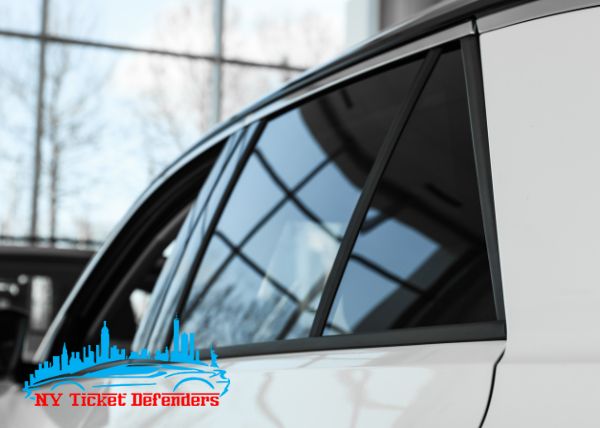The Science Behind Vehicle Window Tinting and UV Ray Defense
The Science Behind Vehicle Window Tinting and UV Ray Defense
Blog Article
Home Window Tinting Rules and Standards: What You Need to Know Before Tinting Your Car
Before waging home window tinting for your automobile, it is important to acquaint on your own with the diverse regulations and standards that govern this practice throughout various states. These regulations determine the permitted levels of tint darkness, frequently determined by visible light transmission (VLT) portions, and consist of certain stipulations for front windscreens focused on making certain road safety. Furthermore, particular jurisdictions may use clinical exemptions for people with certifying problems. Understanding these complexities can save you from possible legal implications, however what are the details policies in your state?
Review of Window Tinting Regulations
Home window tinting regulations are frequently subject to variant throughout different jurisdictions, showing neighborhood policies and security factors to consider. These laws determine the permitted degrees of tint darkness and reflectiveness on automobile home windows, making certain that vehicle drivers keep ample exposure while likewise shielding against damaging UV rays and warmth.
The majority of guidelines classify home window tinting based on the Visible Light Transmission (VLT) portion, which indicates the amount of light that can travel through the home window. Generally, lower VLT percentages indicate darker tints. Laws typically set apart between the front, side, and back windows, with more stringent restrictions used to the front windscreen to enhance safety and security for both the driver and various other roadway customers.
Conformity with home window tinting laws is crucial, as violations can result in penalties, obligatory elimination of the color, and prospective increases in insurance coverage costs. It is important for lorry owners to acquaint themselves with local laws prior to continuing with home window tinting setups.
State-by-State Tint Laws
Recognizing the specific window tinting guidelines in each state is crucial for lorry owners seeking to abide by the law. Each state in the united state has actually developed its own collection of rules controling home window tinting, which can differ dramatically. These guidelines usually dictate the allowed degrees of tint darkness, the kinds of home windows that can be tinted, and any kind of clinical exemptions that may use.
For circumstances, states like The golden state have rigorous restrictions on color darkness for front windows, while others, such as New Mexico, may permit darker tints. Additionally, particular states mandate specific exposure portions for different windows, including the windshield, front side home windows, and rear windows. It is essential for auto proprietors to familiarize themselves with their state's laws to stay clear of prospective fines or charges.
Furthermore, some states may need a certification sticker label to be positioned on tinted windows, showing compliance with state laws. Failing to comply with these regulations not just risks legal consequences but can additionally impact security and exposure while driving. For that reason, automobile proprietors ought to conduct comprehensive research or seek advice from regional authorities to guarantee full understanding and compliance with state-by-state tint laws.
Allowed Tint Kinds and levels
Many lorry proprietors might be amazed to learn that permitted color levels and kinds differ extensively across various states. Each state has developed its very own laws regarding the permissible darkness and reflectivity of home window tint, often determined by Visible Light Transmission (VLT) percentages. VLT refers to the amount of light that can go through the colored windows; thus, a blog lower percentage suggests a darker color.

Additionally, the kinds of tint products permitted can vary, with some states restricting metallic or mirror-like surfaces. It is necessary for automobile proprietors to familiarize themselves with their state's specific regulations to make sure conformity. Non-compliance can result in fines, required removal of the tint, or various other lawful effects, making it essential to comprehend these guidelines before waging installment.
Medical Exemptions for Tinting
While not all states supply allowances for medical exemptions concerning window tinting, those that do recognize the necessity for particular people to boost visibility and convenience due to medical problems. Different clinical problems, such as lupus, skin cancer cells, and particular eye conditions, can make individuals particularly conscious sunlight. These people might call for darker colors to safeguard themselves from damaging UV rays and glare.

It is essential to note that despite a medical exemption, there might still be restrictions on the degree of color allowed. Compliance with state legislations guarantees that people are both protected and within lawful restrictions. Those taking into consideration medical exemptions ought to call their local Division of Motor Autos or equivalent authority to understand the demands and treatments needed to request an exception efficiently.
Charges for Non-Compliance
Falling short to comply with home window tinting legislations can bring about substantial fines, which differ by state. Police are encouraged to provide citations for automobiles that do not follow the specified tinting regulations. These charges commonly consist of fines, which can range from moderate total up to a number of hundred bucks, relying on the extent of the violation and the state concerned.
In some jurisdictions, repeated offenses may cause rising fines or added charges, such as mandatory court looks. Additionally, non-compliance may demand the elimination of prohibited tinting, commonly at the proprietor's cost. In extreme situations, regular wrongdoers may deal with suspension of their lorry registration until compliance is accomplished.
Additionally, insurance coverage ramifications may develop from receiving several useful site citations for home window color infractions. Insurers might see such infractions as an indicator of riskier behavior, potentially bring about raised premiums or problem in protection.
To avoid these fines, it is critical for car owners to acquaint themselves with their regional window tinting laws and ensure that their automobile complies (Window Tinting). This proactive strategy not just avoids lawful ramifications but also promotes roadway safety
Verdict

A lot of policies identify home window tinting based on the Visible Light Transmission (VLT) percentage, which shows the amount of light that can pass via the window. Conformity with window tinting regulations is critical, as violations can result in penalties, compulsory elimination of the color, and prospective rises in insurance coverage costs.Comprehending the details home window tinting guidelines in each state is crucial for vehicle owners looking for to abide with the legislation. These policies typically determine the permitted levels of tint darkness, the types of windows that can be tinted, and any medical exceptions that might apply.
For instance, states like California have strict restrictions on color darkness for front home windows, while others, such as New Mexico, may permit darker colors.
Report this page